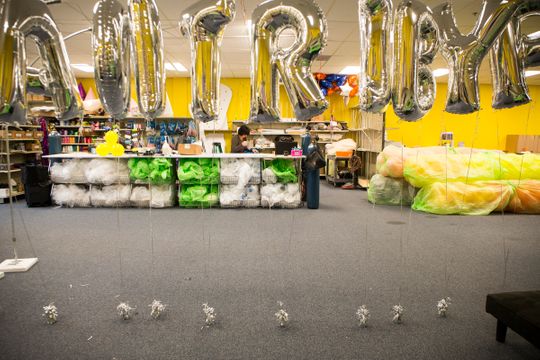
Helium is getting hard to find these days, and it’s ruining parties for people of all ages.
No helium, of course, means no helium balloons, and what’s a celebration without balloons?
With moms trying to plan graduation parties and end of the school year events, the worldwide helium shortage has been a hot topic, especially on parent blogs and at PTA meetings.
“It’s definitely a bad thing,” said Laurie Sigelko, who has been struggling to find helium-filled balloons for weeks. “As simple as balloons are, they are an absolute staple for parties of all different kinds, from little children’s parties to adult anniversary parties.”
Balloons make dull rooms come alive, said Sigelko, 51, of Rochester Hills, Michigan. They are colorful, festive and, in comparison to flowers, cheap. And there’s another party benefit: When the gas is inhaled, you sound like a “Wizard of Oz” Munchkin.
No laughing matter
Still, scientists add, a helium shortage – which has been years in the making – is no laughing matter.
“It is a serious problem,” said Roman Dembinski, an organic chemistry professor at Oakland University. “A shortage and disruption would quench our magnets, so we would be without instruments.”
As helium prices surge to new highs, some researchers and companies in the medical industry, which uses the gas as a coolant in magnetic resonance imaging and nuclear magnetic resonance, are suggesting a ban on party balloons.
Without helium, doctors will not be able to give patients noninvasive, life-saving MRI scans that detect damage to organs and tissues.
An element of the periodic table, helium is what chemists call an inert gas.
It’s nontoxic, nonflammable, and is used in several industries because it is the element with the lowest boiling point, about minus 452 degrees.
But now that the gas is in short supply and the price has shot up, it’s not entirely clear what will happen.
Helium also is used in space flight to pressurize the fuel tanks of liquid-fueled rockets, in satellite instruments, in aerospace for supersonic wind tunnels and even combined with oxygen to create nitrogen-free atmospheres for deep sea divers.
A big reason for the shortage is that about 75% of all the helium comes from just three places: Ras Laffan Industrial City in Qatar, ExxonMobil in Wyoming and the National Helium Reserve in Texas, according to gas-trade publication Gasworld.com.
In Texas, the reserves are being depleted, while at the same time overall demand for the gas has been growing.
Willing to pay for it
Party planning parents are going to great lengths to find stores selling helium. They are driving to multiple places where helium balloons were once plentiful – party stores, grocery stores and dollar stores – with no luck.
New Jersey-based Party City has published a warning to customers that balloon orders might be affected.
Under the heading “Global Helium Shortage,” Party City cautioned that “helium supply has always been a little up in the air (pun intended).”
The company proposes alternatives such as balloon arches and walls that don’t need helium, just tape, and it pledges to help customers who can’t get helium balloons still “throw an unforgettable party.”
On Thursday, Party City announced it would close 45 of its 870 stores.
Some parents, when they find a store with helium, are willing to pay more.
Earlier this year, when Aimee Symington tried to plan with other moms a banquet for her daughter Gracie’s dance club, she had trouble finding a place that would guarantee helium balloons. Initially, they budgeted $50, about $1 a balloon. The bill: $139.64.
“You can have a party without balloons,” said Symington, 43, of Rochester, acknowledging that there are worse things than parties without balloons. “But it’s just not the same.”
Kevin Brikho, who co-owns Party Paradise in Sterling Heights, Michigan with his brother Sam, said the price of helium has gone up about 30% since January. He said they have had to pass the costs on to their customers.
“Back in 2004, a balloon was like 33 cents,” he said. “Now, it’s $1.99.”
